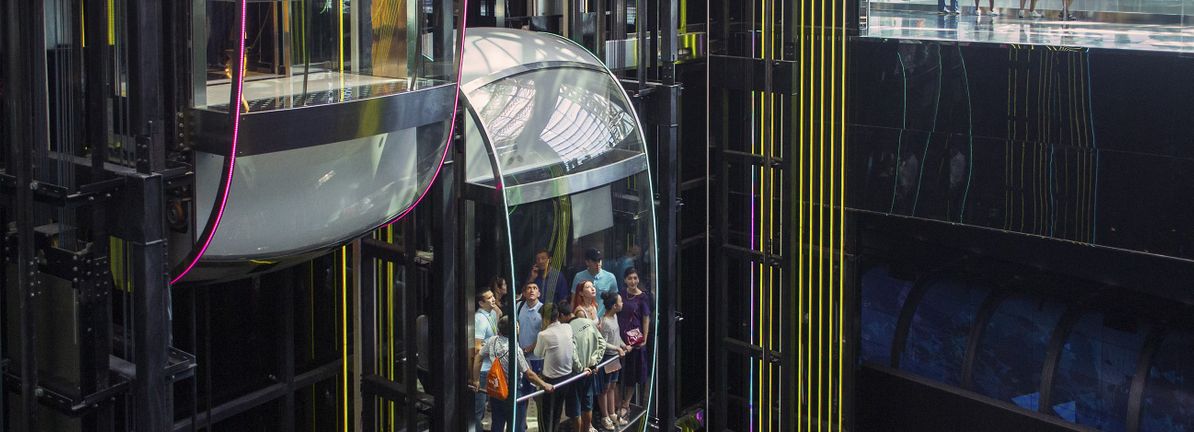- Families separated, children killed as survivors flee Sudan’s ‘apocalyptic’ war Dawn
- Thousands missing, new horrors emerge after RSF taking of Sudan’s el-Fasher Al Jazeera
- Reports of Mass Killings After Militia Storms City in Sudan Time…
Author: admin
-
Families separated, children killed as survivors flee Sudan’s ‘apocalyptic’ war – Dawn
-
PSX slips in October on economic, geopolitical uncertainty – Dawn
- PSX slips in October on economic, geopolitical uncertainty Dawn
- Stocks lose 1,732 points more on profit-taking Dawn
- PSX sees index boost, but no foreign inflows The Express Tribune
- Peace talks boost sentiment: KSE-100 gains over 3% to snap 7-day losing streak Business Recorder
- PSX rebounds as Pakistan, Afghanistan agree to resume peace talks Profit by Pakistan Today
Continue Reading
-
Seoul seeks Beijing’s help for engaging Pyongyang – Dawn
- Seoul seeks Beijing’s help for engaging Pyongyang Dawn
- South Korean president Lee asks China’s Xi for help in engaging North Korea Dawn
- ROK community in China looks to continued growth in bilateral ties news.cgtn.com
- Moments in Motion |…
Continue Reading
-
Why the Taliban turned hostile – Dawn
- Why the Taliban turned hostile Dawn
- Pakistan Defense Chief: TTP Must Stop for Normal Ties with Afghanistan TOLOnews
- Taliban’s Backing Of Militants Threatens Its Own Survival Mena FN
- Post-Doha Reality And The Afghan Taliban’s Failure To Deliver…
Continue Reading
-
Reshuffle in Supreme Court senior hierarchy – Dawn
- Reshuffle in Supreme Court senior hierarchy Dawn
- Reshuffle in SC senior hierarchy Dawn
- Sohail Leghari appointed SC Registrar Pakistan Today
- SC makes key appointments for strengthening institutional efficiency Associated Press of Pakistan
- SC…
Continue Reading
-

Pope Leo decries Sudan violence, urges dialogue and relief effort
VATICAN CITY (Reuters) – Pope Leo on Sunday appealed for an immediate ceasefire and the opening of humanitarian corridors in Sudan, saying he was following with “great sorrow” reports of terrible brutality in the…
Continue Reading
-
Chinese president pushes for global body to govern AI – Dawn
- Chinese president pushes for global body to govern AI Dawn
- APEC leaders wrap up summit after Trump and Xi reach truce in trade war Al Jazeera
- China’s Xi holds court at Apec summit after Trump trade truce Dawn
- China’s Xi pushes for global AI…
Continue Reading
-

Fujibo Holdings (TSE:3104) Earnings Surge 54% Reinforces Bullish Narratives Despite Premium Valuation
Fujibo Holdings (TSE:3104) delivered a stunning turnaround, with earnings surging 54.2% over the past year after five years of declines averaging 0.6% annually. Net profit margin improved sharply to 11.5% from 8.3%, while the share price at ¥6,840 remains below the company’s fair value estimate of ¥11,159.84. With profit and revenue growth poised to outpace the broader Japanese market and no risk factors reported, the latest results give investors plenty to cheer. However, industry-leading valuation multiples may invite debate.
See our full analysis for Fujibo Holdings.
Next up, we will see how this strong earnings report lines up with the narratives shaping expectations on Simply Wall St. We will also look at where the numbers are set to surprise.
Curious how numbers become stories that shape markets? Explore Community Narratives
TSE:3104 Earnings & Revenue History as at Nov 2025 -
Net profit margin climbed to 11.5%, reflecting a substantial improvement in profitability compared to the prior margin of 8.3%.
-
Improved profitability heavily supports claims that Fujibo Holdings is viewed as resilient and income-oriented by investors, especially amid structural headwinds in the textiles sector.
-
The sharp jump in margin, paired with sustained positive earnings, fits the view that long-term holders are rewarded for seeking defensive, stable stocks.
-
With the market viewing Fujibo as a safe haven for yield, this margin boost further enhances its defensive profile.
-
-
Earnings are projected to rise by 11.8% per year and revenue by 7.9% per year, both outstripping Japan’s expected market rates of 7.8% and 4.5% respectively.
-
Such strong growth forecasts make it difficult to dispute arguments that Fujibo’s combination of high earnings quality and above-market expansion differentiates it from typical sector peers.
-
Several years of previously sluggish profit trends are now upended by a pace well above market estimates, which bolsters the case for Fujibo remaining a leader in its space.
-
While some investors tend to wait for clear catalysts, these explicit growth rates provide a fundamental underpinning for optimism despite the company’s “safe” reputation.
-
-
The company’s price-to-earnings ratio stands at 15.1x, higher than both the Japanese luxury industry average (14.2x) and peer average (14.4x), yet the current share price of ¥6,840 still trades at a discount to the DCF fair value estimate of ¥11,159.84.
-
This valuation tension highlights a classic tradeoff for investors: Fujibo’s premium multiples point to market recognition of its stability and growth, but the fact that shares remain below calculated DCF fair value keeps the story open for potential upside.
-
Bulls might worry about paying up for quality, but with no risk factors flagged and clear growth outperformance, the premium could be justified.
-
This creates a disciplined entry point for investors who anchor their decisions on fair value gaps rather than simply following sector averages.
-
Continue Reading
-
-

Waseda Academy (TSE:4718) Net Profit Margin Rises to 6.8%, Reinforcing Bullish Growth Narrative
Waseda Academy (TSE:4718) posted a net profit margin of 6.8%, up from 6.0% last year, while earnings have climbed an impressive 28.3% per year over the last five years. Revenue is forecast to advance 6.8% annually, and earnings are expected to grow at 9.1% each year, both outpacing the Japanese market’s respective rates. With stronger margins and solid top-line growth, investors have multiple reward factors to consider and no reported risks to cloud the outlook.
See our full analysis for Waseda Academy.
Next, we will see how these latest results measure up to the top narratives around Waseda Academy, highlighting where the numbers confirm the story and where they may push back against consensus views.
Curious how numbers become stories that shape markets? Explore Community Narratives
TSE:4718 Revenue & Expenses Breakdown as at Nov 2025 -
Net profit margin has increased to 6.8% from last year’s 6.0%, showing Waseda Academy is translating more of its top-line growth into bottom-line gains.
-
With margin expansion and a consistent five-year earnings growth rate of 28.3% per year, the prevailing market view highlights Waseda Academy’s ability to improve efficiency and navigate competition. However, sustained progress will depend on successfully managing cost controls as revenue continues to expand.
-
This margin improvement supports a constructive view that operational performance is on a solid trajectory.
-
The future pace will be watched closely against sector trends and the need for further innovation or technology investment.
-
-
Earnings for Waseda Academy are projected to rise by 9.1% annually, noticeably above the broader Japanese market’s 7.8% expectation. Revenue growth at 6.8% per year also surpasses the market’s 4.5% trend.
-
Prevailing market view emphasizes that sector outperformance in both revenue and earnings forecasts is a standout for Waseda Academy, especially as broader education providers face demographic headwinds and digital disruption.
-
This sector-beating guidance makes Waseda Academy’s durability and positioning versus peers a focal point for investors seeking growth exposure.
-
Market watchers remain attentive to how digital innovation and new program initiatives could further drive these trends.
-
-
With a history of profit and revenue growth, good value against peers, and attractive dividends identified as rewards along with no risks reported, Waseda Academy’s fundamental profile stands out among listed Japanese education firms.
-
Prevailing market analysis contends that this strong fundamentals setup heavily supports a positive outlook, because it removes common stumbling blocks such as risk factors seen at competitors and offers investors multiple ways to benefit from operational success.
-
The lack of risk disclosure means investors may view current valuations as better supported, while reward features like rising earnings and steady dividends offer additional appeal.
-
With few red flags present, Waseda Academy’s clean risk-reward tradeoff could draw investor interest as long as sector challenges do not escalate unexpectedly.
-
Continue Reading
-
-

TOTO (TSE:5332) Margin Slumps to 0.6%, Undercutting Bull Case for Earnings Rebound
TOTO (TSE:5332) is set for a turnaround, forecasting annual earnings growth of 30.9% over the next three years, which sharply outpaces Japan’s market average of 7.8%. On the other hand, revenue is expected to rise at 2.6% per year, lagging behind the broader market’s 4.5% pace. Net profit margin has contracted to 0.6% from 5.2% last year after absorbing a significant one-time loss of ¥38.8 billion. The share price now trades above estimated fair value. Despite recent years of a 5.5% annual earnings decline and lingering margin pressure, investors are eyeing management’s bullish outlook and whether projected growth can offset recent challenges.
See our full analysis for TOTO.
Next, we will see how the latest numbers compare to the key narratives shaping market sentiment, spotlighting where the expectations and the actual results align or diverge.
Curious how numbers become stories that shape markets? Explore Community Narratives
TSE:5332 Earnings & Revenue History as at Nov 2025 -
Net profit margin dropped to 0.6%, reflecting the direct impact of a large, one-off loss of ¥38.8 billion that sharply compressed profitability compared to last year’s 5.2% margin.
-
Bulls highlight TOTO’s ability to rebound from extraordinary events and cite the forecast for 30.9% annual earnings growth as evidence of management’s confidence in long-term recovery.
-
TOTO’s Price-to-Sales Ratio of 0.9x matches its peer average, yet remains above the broader industry average of 0.5x. This signals a premium relative to other industry players.
-
Prevailing market analysis notes investors may be willing to pay a higher price for TOTO’s anticipated profit turnaround. However, the current share price trades above estimated DCF fair value (¥3,923 vs. ¥3,249.48), indicating any disappointment in meeting growth forecasts could put pressure on the stock.
-
Earnings have fallen by an average of 5.5% per year over the past five years, a persistent negative trend that weighs on the turnaround narrative.
-
Prevailing market view emphasizes that while sharp improvement is forecast, the legacy of declining earnings and the recent net loss increase the challenges for a swift transition to sustained profit growth.
Don’t just look at this quarter; the real story is in the long-term trend. We’ve done an in-depth analysis on TOTO’s growth and its valuation to see if today’s price is a bargain. Add the company to your watchlist or portfolio now so you don’t miss the next big move.
Continue Reading
-